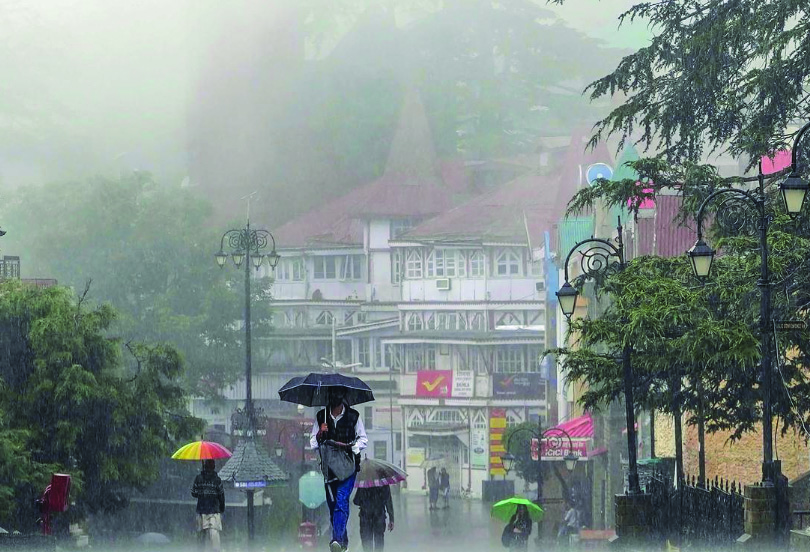Govt expands green belt areas but concerns on structural safety of Shimla buildings unaddressed

Shimla: Persistent pressures on Shimla to meet growing population demand for new constructions and threat of haphazard urban growth, has made the British era hill town highly vulnerable to expansions due to slope instabilities and ecological degradations, during the past three decades.
Even as the Supreme Court has already given its nod to Shimla development Plan (SMP), first to come-up in the past four decades, concerns have been raised by the environmentalists and structural experts on the town’s carrying capacity.
The constant sinking of the slops, landslides, falling deodars and buildings turning unsafe in more than 40 localities, including core Shimla area, due to blocked drainage system, Shimla looks like it is waiting for a major disaster.
After the Supreme Court nod to Shimla Development Plan, which experts turn as ‘ highly compromised to favour builders’ lobby, the government is responding with new measures like enhancing the greenery.
“The state government has amended the Shimla Development Plan to expand the Green Belt Areas encompassing both the town and its suburbs” said Chief Minister Sukhvinder Singh Sukhu.
Sukhu has reiterated the government’s commitment to the planned and systematic development of Shimla, focusing on restoring its historical charm and ecological balance. The increased forest cover is expected to mitigate soil erosion and bolster the state’s environmental resilience.
Under the Shimla development Plan, the existing 17 green belts are opened to constructions but restricted the new constructions to single storey and attic with restrictions on felling of trees on the plot where the constructions is sought.
Earlier there was a complete ban on constructions in the green –belt, heritage zone and core Shimla areas.
Sukhu says residential construction within the Green Belt Area will be strictly regulated. Construction will only be permitted on plots devoid of trees. Any plot containing trees, whether green or dry, will be designated as a green plot, prohibiting any construction activities. The areas currently designated as Green Belts include forests bounded by the bye-pass and cart road, Nabha forest, Phagli and Lalpani forests, Bemloe forest, Himland forest, Khalini and Chhota Shimla forest areas, and several others detailed in the plan.
Additionally, the government has decided to include new areas under the Green Belt designation. These areas are Retreat, Mashobra Band, Tukda Andri, Shiv Mandir Andri, Tal and Giri, D.P.F. Khalini, B.C.S. Mist Chamber, and Parimahal.
The Chief Minister said, “This initiative aims to preserve Shimla’s natural heritage, ensuring a greener and healthier future for upcoming generations. We must maintain a balance between environmental conservation and development. The state government is committed to curbing haphazard construction in Shimla to preserve its aesthetic appeal, making it a favorite destination for tourists.”
Green areas in Shimla are the city’s lungs, crucial for maintaining environmental balance and enhancing quality of life. They reduce pollution by absorbing carbon dioxide and releasing oxygen, control temperature, and mitigate the urban heat island effect.
Besides, these green spaces enhance the city’s aesthetic appeal, offering residents and tourist places for recreation and relaxation, which in turn improves mental health and well-being and play a significant role in preventing soil erosion and landslides. During last year’s monsoon, Shimla has seen major strategies including building collapses claiming a heavy toll of lives including one horrifying incident of Shiv mandir tragedy in Summer hill area of the town.



